|
BULB LOG 11 16-03-05
When ever I have been away from home, even for a few days, the first thing I like to do when I get back is to have a walk around the garden to see what has changed.
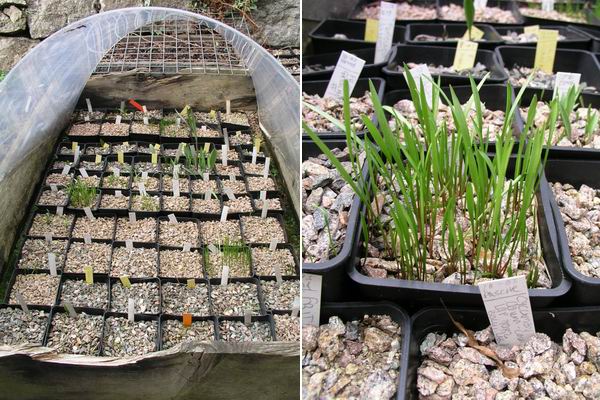
Fritillaria seed frame
Starting in the seed fame area there is lots to see; there are many pots of frit seedlings showing some just germinating and others coming up for a second, third or fourth year. I always recommend potting on frit seedlings at the end of the second year of growth and in an ideal world this is what I would like to do with all of ours. However we have so many pots of bulbs that the ideal treatment is out the window and some have to stay in their seed pot until they reach flowering size. This is not a problem as long as you remember to feed them especially with potash (K=potassium) to help them build up their bulb. By not re-potting it may take a year or two more for them to achieve flowering size.
It is a fact that seedling bulbs can often survive colder temperatures than a mature bulb of the same species. One of the questions that I was asked at the weekend was at what age does this change in hardiness occur ? I believe it is when the young bulb reaches a mature form, two scales in fritillaria.
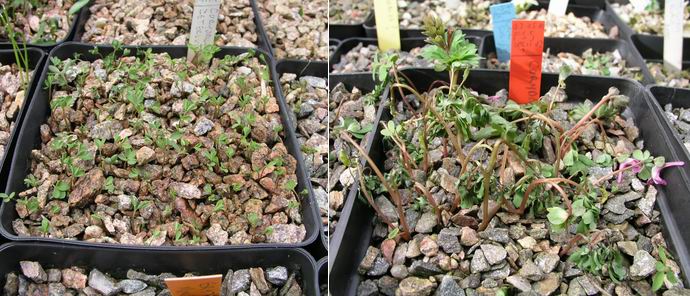
Corydalis seed
We can see this illustrated well in the two pots of corydalis seedlings above. One with young second year seedlings (left) are perfectly ok after the very sudden temperature drop while the young flowering pot full has been cut back by the frost. It is just the foliage that has be damaged, the bulbs should have survived and the plant will grow on with whatever foliage has escaped harm from the freezing conditions but the bulbs will not be able to put on as much growth this year without their full complement of leaves.
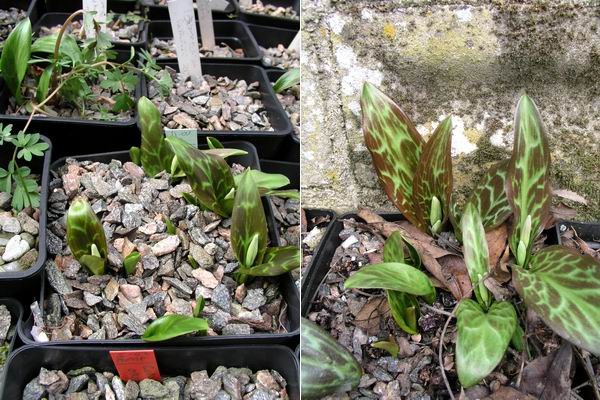
Erythronium seedlings
Some pots of erythronium are about to flower for the first time this year from a sowing date of 2001, these have not been re-potted but have been well fed and it has taken them five growing seasons to achieve flowering size.
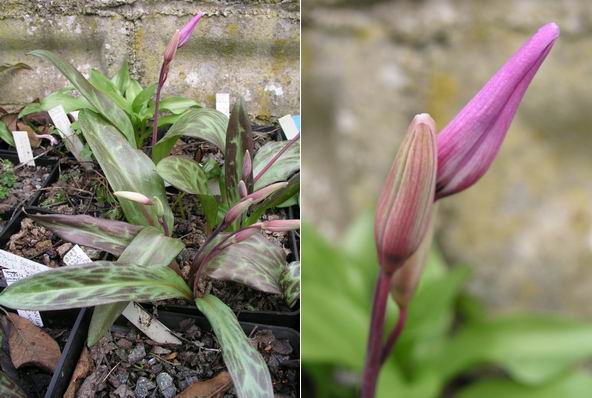
Erythronium hendersonii
There are many plants in bud in the erythronium frames like this Erythronium hendersonii which is always among the first to appear, note the variation in leaf markings which you will get from seed raised plants. We have Erythronium hendersonii with everything from well marked leaves to plain green leaves.
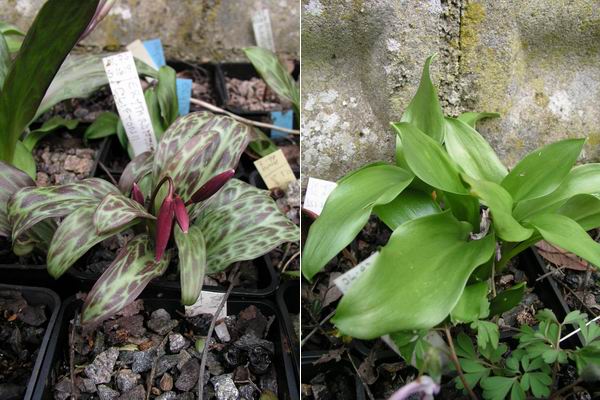
Erythronium leaves
On the left is another of the first erythroniums to show each year, E. multiscapoideum, it has always got well patterned leaves unlike E. tuolumnense (right) which always has plain green leaves.
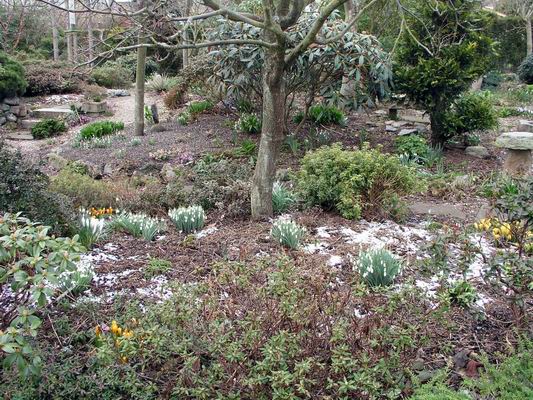
Garden view
Now to the garden where the frost is starting to lift and there are only a few remnants of snow left. The bulbs which moved so quickly in February, when we had a very mild spell, have had the brakes put on by this cold snap and nothing else has ventured far above the mulch. I can however see the first signs of the erythroniums and corydalis just appearing and if we get the warm period the forecasters are predicting (12 to 15degrees C next weekend) then they will jump into action very quickly. This is just what the bulbs are designed for, to respond rapidly to favourable climatic conditions, to flower and set seed in what is often a very short growing season in their native habitat before the conditions turn hostile again. Bulbs in our garden usually have a longer growing period than their wild counterparts because of the cooler moist climate which allows them to take their time to mature and set seed before going dormant.
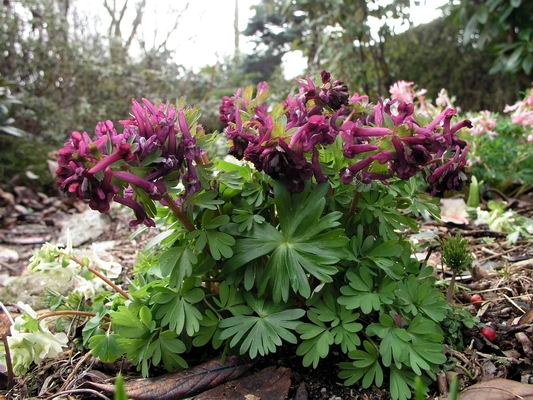
Corydalis dark purple
Some of the early corydalis like this nice rich purple form of C. solida, are just approaching their peak flowering despite the cold conditions. This is a self sown seedling that we have marked as worth propagating.
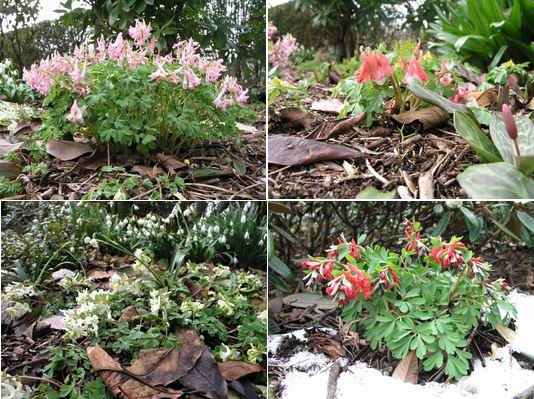
Garden corydalis
Here are a few more of the other early flowers on corydalis which I will show you in more detail in a future log.
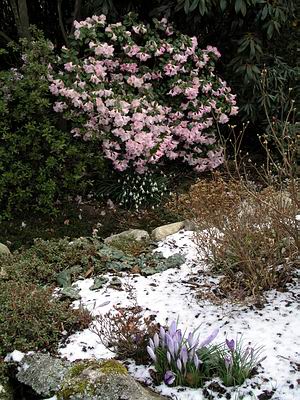
Rhododendron cilpinense
Amazingly, Rhododendron cilpinense has not been too badly affected by the harsh frosts. It is partly protected by being grown under larger rhododendron species and also it does not get the sun until late in the day so any frost comes out slowly and so does less damage to the cell structure of the flowers. The shrubs and trees are essential in our garden as they not only provide the structure and form that shapes the garden but they also help the bulbs by removing the surplus moisture in the summer. We do have to keep these shrubs and trees well cut back so that they do not swamp the bulbs and take over completely.
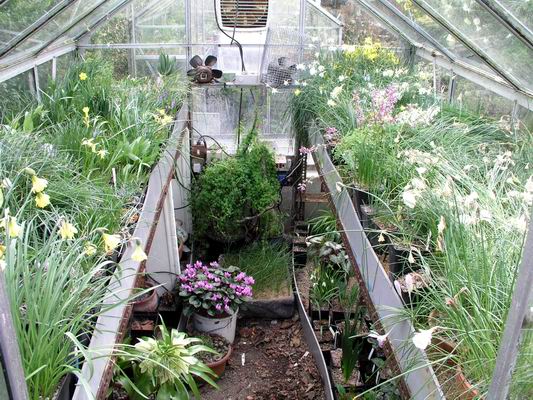
Bulb house
As you can see the bulb house is crammed full of growth as we make as much use of the space under glass as we can, it is often difficult for us to get in!
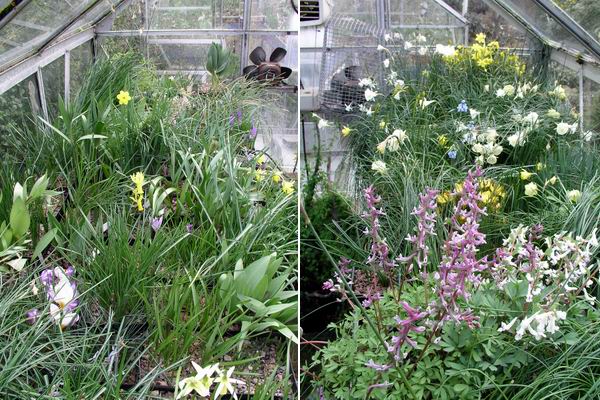
Bulb house x2
A closer look will let you see that there is every thing from Narcissus flowers going over and starting to set seed, corydalis flowering to frits and other bulbs just appearing through the gravel. This is not an ideal way to grow bulbs, it would be much better to have plenty of space around each pot so that the plants could get as much light as possible without having to compete with their neighbours, but who said it was an ideal world? Like many of you this is what we have to do to grow so many plants in such a small space.
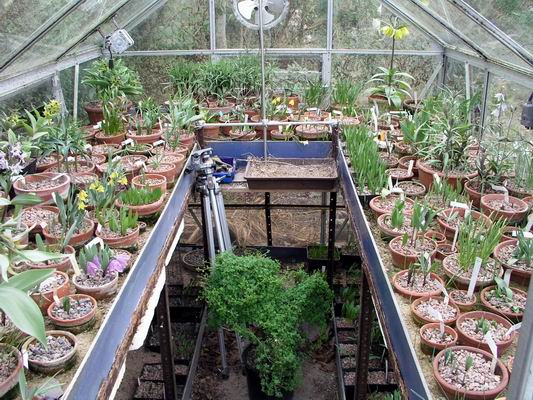
Frit house
Because we still use mostly clay pots in the frit house the plants have a bit more room around them but this is likely to change as I am drifting towards square plastic pots here as well. This change is inevitable as we have so many pots of seed grown frits reaching flowering size and needing to be grown under the protection of cold glass, like this pot of Frit. kittaniae.
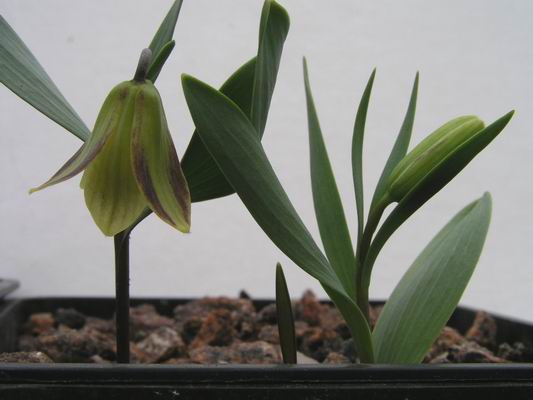
Frit kittaniae
^ back to the top ^
|

